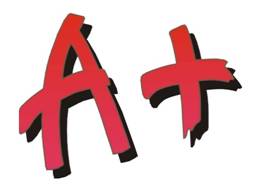|
|
Crucible ConnectionsStudent Work
1) Pre-Assessment- Students’ pre-assessments were not graded; rather they were used only as a tool for measuring students’ prior knowledge about McCarthyism and students’ familiarity with primary and secondary sources. (See pre-test.) The pre-test was made up of four statements:
Before handing out the pre-tests, I explained its purpose and asked that the students be honest in selecting the statements that best described them. I also assured the students that this would not be taken for a grade. Therefore, I do believe that the student responses are an honest reflection of what they knew/did not know about McCarthyism and primary/secondary sources. The pre-test results are listed below. Distrubution of Scores for Pre-Assessment x=one student
2) Formative Assessment- Students’ McCarthyism Research assignment was scored using a four-point rubric, assessing each student’s level of adherence to the following attributes: information is accurate; both primary and secondary sources of information are used; a correct works cited is included; an appropriate depth of research is obvious; and information is organized in a logical and meaningful manner, communicating findings effectively. Students were graded out of a total score of 100 points.
This mini research assignment was given as a homework assignment, and I do feel that for the most part the students’ grades did parallel their level of understanding of McCarthyism as well as their understanding of the use of primary and secondary sources. Although, several students had a lot of information but did not follow directions; so they received a lower grade. In those cases, I would say that the students may have had a solid understanding of McCarthyism, even though their grades suggested otherwise. The results from this assessment are listed below. (*Please note that the formative assessment scores include five less students than the McCarthyism Pre-Test. This is because several students did not complete the research assignment at the time I compiled these scores.)
3) Summative Assessment- The post-assessment was scored based on how well the students displayed their knowledge of McCarthyism and how it relates to The Crucible. Students received grades for this assignment, but the grades were based on effort and involvement in the assignment rather than on the quality of their answers due to the fact that a couple of the questions’ answers could have been opinion-based. For this summative assessment, I asked each student to get out a sheet of notebook paper, and then I proceeded to ask them a couple reflective questions between which they had time to respond on paper. The first question I asked was, “How does The Crucible relate to McCarthyism?” I asked them to develop their answers by showing me what they now know about both topics. I asked the students to think back to the first day of the unit and think about the knowledge they have now that they did not have then. Next, I asked the students, “What life lesson have you learned from our study of both The Crucible and McCarthyism? Then I asked several other questions regarding the purpose and importance of education, and how education relates to The Crucible, McCarthyism, and life today. This summative assessment was given during class on the second day of this Learning Experience and on the final day of The Crucible unit. Although students’ grades were determined by effort and involvement in the assignment rather than on the quality of their answers, for my own information, I read through each and compared each to the statements on the pre-test. I checked the statement that best described each student based on his/her responses on the reflective essay. (See portions of students' reflections.) I feel that the students’ scores for this summative assessment are a reliable and accurate measure of their success in this Learning Experience. Unlike on the pre-test where students were to simply check the statement that best described them, on this summative assessment, students had to write to answer these prompt questions and provide explanation. If a student did not know or understand the information, it was very obvious. The results from this assessment are listed below. (*Please note that the summative assessment scores include one more student than the McCarthyism Pre-Test. This is because this student was absent the day of the Pre-Test and never made it up.) Distrubution of Scores for Summative Assessment x=one student
*Go to Modifications. |
|||||||||||||||||||||||||||||||||||||||||||||||||||||||||||||||||||||||||||||||||||||||||||||||||||||||||||||||||||||||||||||||||||||||||||||||||||||||||||||||||||||||||||||||||||||||||||||||||||||||||
|
Updated:
July 13, 2009
|



